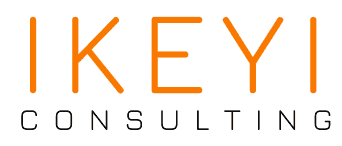Business Plan vs. Strategic Plan: What's the Difference?

In the world of business, planning is essential. It provides a roadmap for achieving goals, navigating challenges, and ensuring long-term success. Two key types of plans that businesses commonly use are the Business Plan and the Strategic Plan. While these terms are often used interchangeably, they serve distinct purposes and focus on different aspects of an organization's operations. In this article, we will explore the differences between a Business Plan and a Strategic Plan.
Business Plan: A Blueprint for Operations
A Business Plan is a comprehensive document that outlines the specific details of how a business will operate. It is typically created when starting a new venture or when seeking funding from investors or lenders. Here are some key characteristics and components of a Business Plan:
1. Business Overview:
- Provides an introduction to the business, its mission, and its objectives.
- Describes the type of business, its legal structure, and its ownership.
2. Market Analysis:
- Analyzes the target market, including customer demographics, needs, and trends.
- Evaluates the competitive landscape and identifies potential competitors.
3. Products or Services:
- Details the products or services the business offers, including features, pricing, and benefits.
- Discusses the development, production, or sourcing of these offerings.
4. Sales and Marketing Strategy:
- Outlines the strategies for promoting and selling products or services.
- Includes a marketing plan that covers advertising, branding, and customer acquisition.
5. Management and Team:
- Profiles the management team, their qualifications, and roles within the organization.
- May include information on key personnel and their responsibilities.
6. Financial Projections:
- Presents financial forecasts, including income statements, balance sheets, and cash flow statements.
- Often includes details on startup costs, funding requirements, and revenue projections.
7. Funding Request (if applicable):
- States the amount of funding needed and how it will be used.
- May include details on the terms of investment or loans sought.
8. Appendices:
- May include supplementary documents, such as resumes, market research data, or legal agreements.
In summary, a Business Plan is a detailed document that focuses on the operational aspects of a business. It provides a roadmap for how the business will be structured, how it will operate, and how it plans to achieve its financial goals.
Strategic Plan: A Blueprint for Long-Term Success
A Strategic Plan, on the other hand, is a forward-looking document that outlines an organization's long-term goals and the strategies required to achieve them. It is not limited to startups but is equally important for established businesses seeking growth and sustainability. Here are key characteristics and components of a Strategic Plan:
1. Vision and Mission:
- Defines the organization's overarching purpose (mission) and its aspirational future state (vision).
2. Goals and Objectives:
- Sets specific, measurable, and time-bound goals that align with the organization's mission and vision.
- Often includes both short-term and long-term objectives.
3. Environmental Analysis:
- Assesses the external factors affecting the organization, including market trends, competition, and regulatory changes.
- Considers internal factors, such as strengths and weaknesses.
4. Strategic Initiatives:
- Identifies the major strategies and initiatives necessary to achieve the defined goals.
- Specifies the action plans, timelines, and responsible parties for each initiative.
5. Resource Allocation:
- Determines the allocation of resources, including budgets, personnel, and technology, to support the strategic initiatives.
6. Monitoring and Measurement:
- Defines key performance indicators (KPIs) and metrics to track progress toward strategic goals.
- Establishes a process for regular review and adjustment of the plan.
7. Implementation and Execution:
- Outlines the steps and responsibilities for executing the strategic initiatives.
- May involve changes in organizational structure, processes, or systems.
8. Communication:
- Communicates the strategic plan to all stakeholders, including employees, investors, and partners.
- Ensures alignment and buy-in throughout the organization.
In essence, a Strategic Plan is a high-level document that focuses on the big picture. It sets the course for the organization's future, guiding decision-making and resource allocation to achieve long-term success.
Key Differences:
- Scope: A Business Plan primarily addresses the day-to-day operations and financial aspects of a business, while a Strategic Plan focuses on long-term goals and strategies for growth and sustainability.
- Audience: Business Plans are often created for external stakeholders, such as investors and lenders, while Strategic Plans are designed to guide internal decision-making and align the organization.
- Time Horizon: Business Plans typically cover a shorter time frame (e.g., one to three years), whereas Strategic Plans have a longer-term perspective (e.g., three to five years or more).
- Content: Business Plans include detailed financial projections and operational specifics, whereas Strategic Plans emphasize vision, goals, and strategies.
In conclusion, both Business Plans and Strategic Plans are essential tools in the business world, serving distinct but complementary purposes. A Business Plan provides a detailed roadmap for immediate operations, while a Strategic Plan charts the course for long-term success and
An email will be sent to the owner. Please allow 24-48 hours for response.
